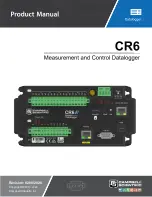
Page | 10
File Layout
All lines are terminated with the standard \r\n (0x0D, 0x0A) characters.
Reference
Description
[Header]
Indicates the start and end of the header data.
Header
Contains revision information and the configuration details used for the
log file:
MobilEyzeLogger=Vx.x
BusSpeed=250K Baud
Filter=0x170,0x170,F (there can be up to 10 filters)
Data
Data lines formatted with the following format string:
%08x,%01d,%01d,%02x,%02x,%02x,%02x,%02x,%02x,%02x,%02x,
%d,%d\r\n
Represented with id’s it looks like:
MsgId, Extended, Size, Byte[0], Byte[1], Byte[2], Byte[3], Byte[4], Byte[5],
Byte[6], Byte[7], Time,Delta\r\n
Where:
MsgId : The message id
Extended : T if it’s an extended message, F otherwise
Size: The number of bytes of data received in the message
Byte[0..7]: The data received in the message
Time Stamp: The # of seconds since the CPU started, in the format of
#.000000.
Delta: The microsecond delta from the time of the last message.
[End]
Indicates the end of the data for that session.
Determining the actual Date/Time of a given CAN message
Users have expressed a desire to know how to determine the actual date/time of a given CAN message.
Following is a sample file that we’ll use for the discussion.
---- START OF FILE -----
[Header, Start Time=Mon Sep 24 17:02:09 2012, TimeStamp=2.069340]
MobilEyzeLogger=V01.999.dirty
BusSpeed=250K Baud
Filter=0x0,0x7ff,F
Filter=0x0,0x1fffffff,T
Using Standard Logging
[Header - End]
0x00000000,1,8,0x00,0x00,0x00,0x00,0x00,0x00,0x00,0x00,9726.191841,0.000000
0x00000001,1,8,0x01,0x00,0x00,0x00,0x00,0x00,0x00,0x00,9727.191712,0.999871
































